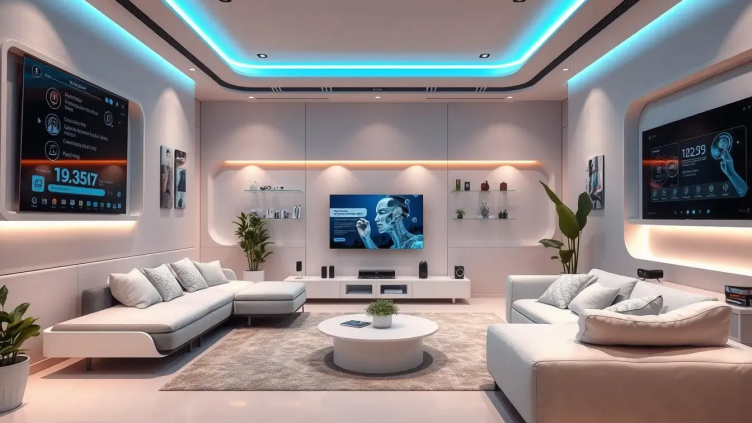
In today’s fast-paced world, technology is advancing at a rapid pace, and one of the most exciting developments in recent years has been the integration of Artificial Intelligence (AI) in various aspects of our lives. From virtual assistants to self-driving cars, AI is revolutionizing the way we live and work. One industry that is at the forefront of this technological revolution is interior design, where AI is being used to create smarter and more efficient homes. In this article, we will explore how AI is transforming the field of interior design and look at how smart homes are evolving in 2025.
The Role of AI in Interior Design:
AI is playing an increasingly important role in interior design, with designers and homeowners alike turning to AI-powered tools to help them create spaces that are not only visually stunning but also functional and practical. By using algorithms and machine learning, AI can analyze data on a large scale and provide insights that would be impossible for a human to generate. This allows designers to make informed decisions about everything from color schemes to furniture placement, resulting in spaces that are truly personalized to the needs and preferences of the occupants.
Benefits of Integrating AI in Interior Design:
- Personalization: AI can analyze data about a homeowner’s preferences and lifestyle to create spaces that are tailored to their specific needs.
- Efficiency: AI-powered tools can help designers streamline the design process, saving time and money.
- Innovation: AI can push the boundaries of what is possible in interior design, allowing designers to experiment with new materials and technologies.
- Sustainability: AI can help designers create environmentally friendly spaces by optimizing energy usage and reducing waste.
How Smart Homes are Evolving in 2025:
In 2025, smart homes will be more integrated and interconnected than ever before, thanks to the power of AI. From lighting and heating systems that can be controlled remotely via a smartphone app, to furniture that adjusts to the user’s preferences, smart homes are becoming increasingly sophisticated. In 2025, we can expect to see homes that are not only beautiful and functional but also intelligent and responsive to the needs of their occupants.
The Future of Interior Design:
With the integration of AI, the future of interior design looks bright. Designers will have access to powerful tools that can help them create spaces that are truly innovative and personalized. From virtual reality simulations that allow clients to experience a space before it is built, to AI-powered design assistants that can generate ideas and suggestions, the possibilities are endless. As we move into 2025 and beyond, we can expect to see AI continue to shape the way we live and work, making our homes smarter, more efficient, and more beautiful than ever before.
Conclusion: The integration of AI in interior design is transforming the way we think about our living spaces. By harnessing the power of AI, designers can create homes that are not only aesthetically pleasing but also functional and efficient. In 2025, smart homes will be more interconnected and intelligent than ever before, offering homeowners a level of convenience and comfort that was unimaginable just a few years ago. As we look to the future, it is clear that AI will continue to play a crucial role in shaping the way we live and interact with our surroundings.
